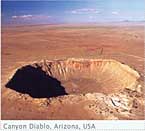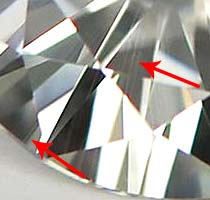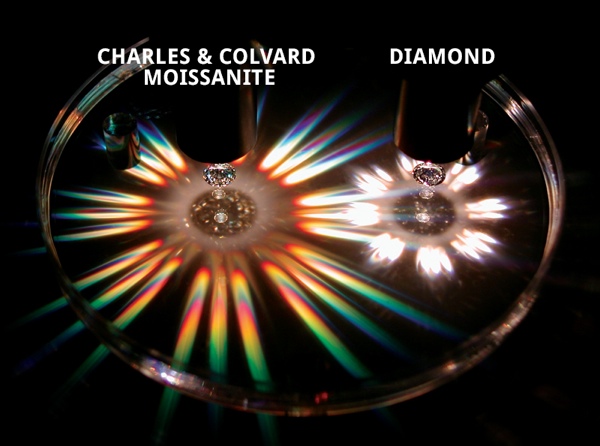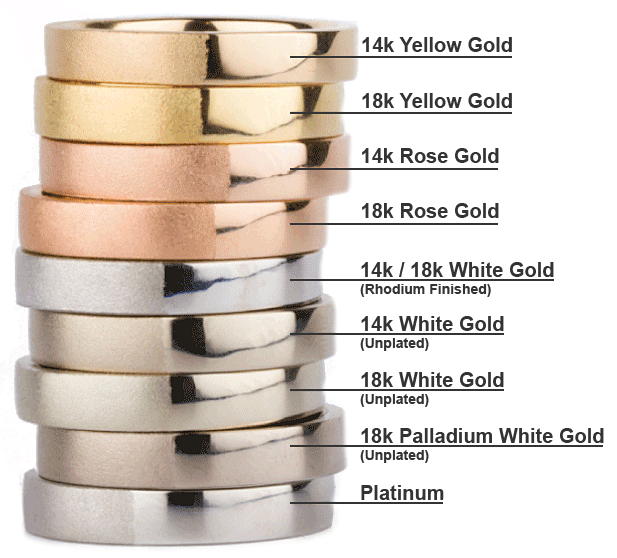Information About Stones & Metals
What is Moissanite?
If you are not yet familiar with Moissanite, it is a gem-quality silicon carbide that is frequently mistaken for a diamond due to its similar appearance. However, it is important to note that Moissanite is not a diamond simulant, but rather a superior alternative that boasts exceptional fire and brilliance. Its exceptional hardness also makes it an excellent choice for creating heirloom-quality jewelry, as it is highly resistant to scratches, chips, and breakage. Furthermore, our Moissanites are expertly cut and polished to a higher standard than the majority of diamonds commonly found in engagement rings.
Notably, Moissanite is ethically sourced and environmentally friendly, making it a socially conscious choice for those who prioritize sustainability. Its origin can be traced back to the discovery of minute quantities of the mineral in particles carried to earth by a meteorite 50,000 years ago. Today, it is available as faceted gemstones in a wide range of shapes and sizes.
One of the key advantages of Moissanite is its exceptional stability over time. Unlike some other diamond alternatives that can become clouded or dull with age, Moissanite is just as atomically stable as a diamond, meaning that it will not change color or lose its optical properties over time. In fact, given that Moissanite is more heat-resistant than diamond, one could argue that it is even more atomically stable. Ultimately, Moissanite is the ideal choice for those seeking assurance that their jewelry will continue to sparkle for a lifetime and beyond.
Moissanite and Charles & Colvard History
Moissanite is a shimmering mineral with unparalleled fire and brilliance, discovered by Nobel-Prize winning scientist Henri Moissan in 1893. The mineral was discovered in fragments of a meteorite that had crashed into the Arizona desert fifty thousand years ago, near Diablo Canyon. After extensive research, Dr. Moissan concluded that this mineral was made of silicon carbide. It was in honor of Dr. Moissan's contribution that well-known gem expert and mineralogist, George Kunz, suggested the name "moissanite" for the new jewel.
Despite the extraordinary discovery, naturally occurring quantities of Moissanite are incredibly small, and it would be another century before this magnificent mineral would emerge as the brilliant jewel we know today. In the late 1980s, a North Carolina company named CREE developed a proprietary process for producing large single crystals of Moissanite, inspired by Dr. Moissan's discovery.
In 1995, a master diamond cutter observed samples of Moissanite and recognized that properly cut crystals would make a brilliant new jewel. CREE and eventually Charles & Colvard worked on a three-year research project to bring the fire and brilliance of Moissanite jewels to consumers. Charles & Colvard has been the primary source for Moissanite gems, with American and international patents barring any competitor gems from entering the market until late 2015. Since then, several new overseas sources have entered the American market.
At DOC COMPANY, we take pride in offering our customers the best quality Moissanite gems.
This incredible jewel, with its fascinating history, offers a unique and ethical alternative to traditional diamonds.


Color, Clarity, & Carat
Moissanite Color
Our company offers Moissanites in both colorless and near colorless ranges, and we utilize the color grading scale developed by GIA, commonly used for diamonds, to grade Moissanites:
- Grades D, E, F: colorless
- Grades G, H, I: near coloress
- Grades J, K: faint color
According to this scale, Moissanites with grades D, E, and F are classified as colorless, while grades G, H, and I are categorized as near colorless. Moissanites with grades J and K exhibit a faint yellow hue. It is important to note that grades D, E, F, and even G Moissanites are virtually colorless and can be described as having an "icy" white appearance, while grades H and I exhibit a slightly warmer or steely white hue. As the grading scale progresses into the J and K range, the yellow tint becomes more noticeable.
Moissanite Clarity
Clarity refers to the presence of surface blemishes and internal inclusions in a gemstone. When compared to natural diamonds, Moissanite experts concur that the average clarity of Moissanite is equivalent to VS clarity on the GIA scale. This indicates that inclusions are only visible under magnification and are difficult to discern under a jeweler's loupe with a 10x magnification. It is worth noting that less than 10% of faceted diamonds possess this level of clarity.

Moissanite Carat
The carat is the conventional unit of measurement for a diamond's weight. However, Moissanite is typically not described in terms of its actual carat weight, as it weighs roughly 10% less than a diamond. For instance, a 6.5mm round diamond would weigh 1.0 carat, while a 6.5mm round Moissanite would weigh approximately 0.88 carats. Despite being of the same size, the two stones have different carat weights, which can be confusing. To address this issue, Moissanite measurements are usually listed in millimeters and accompanied by their diamond equivalent weight in carats. This way, a 1-carat round diamond and a 1-carat round Moissanite have the same size. For a comprehensive conversion table of size to diamond equivalent carat weight, please visit our loose stone page.
Optical: Fire, Brilliance & Luster
Moissanite's characteristic sparkle is more than just a show of beauty - it's a testament to the superior science behind the jewel, boasting more fire, brilliance, and luster than any gemstone on earth. This is not merely a sales line, but a scientific and quantifiable fact.
Moissanite is known for its high refractive index of 2.65, which is notably higher than diamond, sapphire, CZ and other gemstones known to be very brilliant. Brilliance is the flashes of white light exiting the top and sides of a gemstone. The higher the refractive index of a gemstone, the more brilliance the jewel emits. Moissanite's superior refractive index makes Moissanite the most brilliant fine gemstone on earth.
Moissanite's fire, the flashes of colored light, is even more impressive, being more than twice that of a diamond.
Luster is the amount of light that is reflected back to the observer from the surface of the gemstone. In addition to superior fire and brilliance, Moissanite has 18% greater luster than a diamond and 50% greater luster than CZ.

Physical Attributes: Hardness, Toughness & Durability
Moissanite's brilliance outshines every gemstone, but its exceptional durability is truly remarkable, to say the least. Moissanite is a gemstone that will endure for generations and beyond.
A gemstone's durability consists of hardness, toughness and stability.
Moissanite is Tougher than Diamond
The ability of a gemstone to remain intact, withstand force (pressure) and resist breaking or chipping is known as toughness. Determined by a substance's atomic and chemical structure, toughness can vary directly within a gemstone. While both Moissanite and diamond are rated excellent in toughness, Moissanite has a different atomic structure than diamond which does not have a direction of cleavage (which sometimes is considered as a direction of structural weakness). Simply said, Moissanite outranks diamond in overall toughness.
Durability: Impervious to Heat & Chemicals
Durability is a material's ability to remain intact or withstand exposure to temperature and chemicals. Moissanite can easily withstand temperature variations during the jewelry manufacturing process and repairs at a jeweler's bench (unlike other gemstones such as cubic zirconia or emerald). In fact, Moissanite has a higher vaporization temperature than diamond and can withstand temperatures reaching 2,000 degrees Fahrenheit.
Moissanite is also very stable when exposed to various chemicals, solutions and acids typically used during both manufacturing and jewelry repair that commonly damage other less stable gemstones. Household chemicals such as bleach, chlorine, ammonia, etc. have no impact whatsoever.
Moissanite is One of the Hardest Gemstones on Earth
Hardness refers to a gemstone's resistance to being scratched or abraded and is commonly expressed as a number ranking (1 being the softest and 10 being the hardest) on the Mohs relative hardness scale.
Moissanite ranks 9.25 on the Mohs scale making Moissanite one of the hardest gemstones on earth. It's unusually high hardness makes scratching and abrasions very rare, even after many years of daily wear and tear.
Moissanite's ability to resist abrasion and scratching easily outranks and is more than double (120%) the hardness of any popular diamond simulants such as Diamond Nexus (CZ), Russian Brilliants (CZ), or Asha Diamond Simulants (CZ).

What is 925 Sterling Silver?
Silver is a metal found in nature, it is quite malleable, soft and shiny once polished. It is a metal that can be alloyed (combined with other metals), which makes it easier to work it and create objects and jewelry with it.
In order to use silver in handcrafts, it is necessary to combine it (alloy) with other metals. It is not possible to find pure silver jewelry, i.e. 100% silver.
The most common alloy used in silver jewelry is copper, as it offers hardness and resistance to the piece.

925 Sterling Silver
This nomenclature refers to the amount of silver in a piece of jewelry. In other words, a sterling silver ring is composed of 92.5% silver and 7.5% copper and/or other metals. This silver alloy, with these percentages, is called Sterling Silver, 925 Silver, 925 Sterling Silver, 925 Sterling Silver or Sterling Silver.
How to recognize sterling silver
There are several ways to tell if a piece of jewelry is truly sterling silver, the following methods are the easiest to keep in mind and will help you quickly identify the quality of the jewelry.
The 925 mark: Genuine sterling silver jewelry has a carved mark that says 925. Depending on the size of the jewelry it can be easier or harder to find, but if you look closely you will see the reference.
The smell: 925 silver jewelry should not smell, if it has a strong or coppery scent is that the amount of silver is not 92.5%.
A magnet: Silver does not stick to a magnet.
Precious Metals Guide - All About Gold and Platinum
All precious metals sold by DOC COMPANY TM are 100% recycled and eco-friendly.

14k White Gold
Composition & Color: 14k White Gold is 56% pure gold. It is naturally an off white color, but is finished with a rhodium plating to give it a bright white color.
Hardness: Given the higher nickel content, white gold is harder and more scratch resistant than 18k white gold or platinum so it will maintain its luster longer.
Allergenic: Its not considered hypoallergenic due to the nickel content (estimated 10% of people have a nickel allergy).
Maintenance: With regular wear the rhodium plating will wear off, but can be polished and re-plated by any jewelry repair shop.
18k White Gold
Composition & Color: 18k white gold is 75% pure gold. Like 14k white gold, it is naturally an off white color, but is finished with a rhodium plating to give it a bright white color.
Hardness: The nickel in 18k white gold makes it harder and more scratch resistant than platinum, but not as much as 14k white gold due to its higher nickel content.
Weight: 18k white gold is about 15% heavier than 14k white gold.
Allergenic: Regular 18k white gold is not considered hypoallergenic due to the nickel content. However we offer a 2nd 18k white gold alloy, 18k palladium white gold, which substitutes palladium for the nickel. It is hypoallergenic.
Maintenance:With regular wear the rhodium plating will wear off, but can be polished and re-plated by any jewelry repair shop.
Platinum
Composition & Color: Platinum has the most pure alloy being 95% platinum and 5% iridium or cobalt. It is naturally white, but finishes to a darker grey than 14k or 18k white gold.
Hardness: It is softer than 14k or 18k white gold, and therefore it scratches easier.
Weight: Platinum is very dense and as a result is 70% heavier than 14k white gold.
Allergenic: Platinum is hypoallergenic. Allergies to platinum or the other metals in its alloy are extremely rare.
Maintenance: With regular wear it will scratch and develop a patina finish. However it can be restored to new appearance via polishing by a jeweler.
Yellow Gold
Composition & Color: 14k yellow gold is 56% pure gold. It is yellow with a slight orangish tinge to it due to higher copper content. 18k yellow gold is 75% pure and is a more buttery yellow color compared to 14k yellow gold.
Hardness: Yellow gold is a little softer than white gold. 18k yellow gold is a little harder than 14k yellow gold.
Weight: 18k yellow gold is about 15% heavier than 14k yellow gold.
Allergenic: Yellow Gold is considered hypoallergenic, but a few rare cases may be allergic to the copper content.
Maintenance: With regular wear it will scratch. However it can be restored to new appearance via polishing by a jeweler.
Rose Gold
Composition & Color: 14k rose gold is 56% pure gold and has a pink color to it. 18k rose gold is 75% pure gold. 14k and 18k rose gold have a very similar color and overall appearance.
Hardness: Rose gold is softer than white and yellow gold, but harder than platinum.
Weight: 18k rose gold is about 15% heavier than 14k rose gold.
Allergenic: Rose gold is considered hypoallergenic, but a few rare cases may be allergic to the copper content.
Maintenance: With regular wear it will scratch. However it can be restored to new appearance via polishing by a jeweler.
